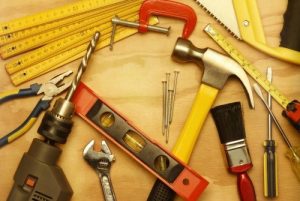If you know how to make a longbow, swipe forward. However, even in 2023, you can find something beneficial in reading the following article. There, we will tell you all about the right weight, shape, and material for a longbow. You will find out how to make a proper bow string that will serve you for hunting, nocks and staves that you need to have to make your longbow a piece of archery art. Read on and don’t miss out.
The article below is set to familiarize you with constructing a bow and giving you decent tips to make a bow by yourself. The whole history of this weapon is connected with craftsmanship and attention to detail. Thus, a beginner needs to learn a few things about ancient bow makers’ heritage.
Before you go on reading, check out the most wanted pages of our expert survival blog:
The history of a bow and arrow
Thousands of years ago, an unknown human being made an invention that changed people’s survival conditions for centuries. The invention of the longbow gave the first people an opportunity for long-distance hunting. This innovation allowed hunters with a bow to become a silent death: only a slightly hearable sound of a string and an arrow piercing the air divided the archer and target. Surely this magnificent tool rapidly became a survival weapon: the first arrowheads were made from sharpened stones and made this weapon not only stealth but far more lethal than any other long-range weapons of the time. The longbow held its prior positions in long-distance fights for hundreds of centuries: even when the first crossbow was invented regular bow was still widely used due to its reloading time and simplicity.
Bow Creation: Getting Started
First, you should always keep in mind that your work’s final result depends on a huge amount of time and physical labor multiplied with a patient and thoughtful detailing process. Don’t mislead yourself: it takes a lot to make a professional survival weapon rather than a fun toy. In this case, the more tools you have in your workshop, the less you’ll have to deal with difficulties while crafting the bow. Despite this, many generations of Native Americans made a perfectly balanced longbows without professional tools, but it could take much more time and physical strength.
The Things You’ll Need to Make a Longbow

Keep in mind that ancient hunters and tribesmen did not have all the scrap materials, fine metalwork, shellac, or PVC pipes to make their finest weapons. That means that bow making requires different resources and materials: some are necessary while others could be easily replaced with something suitable from the hardware store or your own workshop. Make sure that you’ve gathered all the supplies needed to begin making a bow.
Wood and the materials
Tree Trunk/Pole
The first and the most important thing for bow making is finding a decent piece of wood. This step gives you numerous options to find the tree trunk or a pole you are looking for: you can go to lumber near you and order the size needed or try to find it in the forest. Beware of legitimacy acts that control the collecting and/or cutting the tree trunks in wild nature. Also, many hardware stores allow their customers to buy or order wood, more of that. You can even do it online. There are certain ways to find the right wood for your bow that we will describe in a special section below.
Plywood
You may need to use this type of material to make a drying room. In this case, you definitely might need some 40 Watts light bulbs. There’s no need to find the big pieces of plywood. You may use some scrap pieces or leftovers from your previous projects.
Gorilla Glue and Shellac
These components will help you to hold things together and prevent cracks in staves while processing them. Naturally, you can use any other type of wood glue, but this one recommended itself in the best way.
Parachute Chord
This one is needed to string your bow, but not for archery purposes. This fine and heavy-duty cord will help you bend the limbs and fixate the needed bend for the tillering process.
Bowstring
The recommended material for stringing the bow is a B-50. You may choose the other bowstring materials if you are already experienced in making a bow.
Finish
This is the final step where you’ll need to customize your bow. To do so, you need to choose the coloring and the materials for the handlebar. You’ll need sandpaper, clear and satin polyurethane.
Tools
In this section below, we gathered the list of tools you might need in your workshop to craft your own longbow:
- Drawknife
- Rasps
- Pocketknife
- Hatchet
- Cabinet scraper
- Chainsaw file
- Sledgehammer
- Vices
- Wedges
Right Type of Wood for a Bow

As bows and arrows were widely distributed worldwide, there are a hundred usable wood types from which you can make a survival bow. This article will use native American and European ways to choose the right tree to make one. In terms of your size, strength, archery, and carpenter skills, you have to search the woods for one of these noticeable trees:
Elm
This type of tree allows you to make a short and stout bow. The limbs of a longbow made of an elm tree will be thicker than regular ones. The draw weight of a bow like this will be lighter than the bows made of other hardwood.
Yew
This lightweight wood is widely known in Europe for making simple bows. Yew is the only non-hard-wood used for longbow crafting for centuries. Definitely, the fact that yew has fewer knots than other types of wood suitable for bowmaking is very important for beginners.
White Ash
The bows made of ash last longer than the ones made of elm or yew. They are much less climate-sensitive than the ones mentioned above, and their draw weight is moderate. Be forewarned! The belly of the ash bow can suffer from compression cracks.
Other options
There are more types of hardwood that can be used to build a longbow. Surely, the bow made from oak, hickory, or maple wood will be more solid and have heavier draw weight and longevity. The other side of dealing with these hardwood types is that they are complex to work on and harder to find.
Picture
Choosing the Piece of Wood
When you’ve selected the type of wood you want to use, you’ll need to find the right tree. This step is nearly the most important of all: even with all the skills and tools needed, the spoiled pole can ruin all your work. Don’t choose a section of the tree trunk that is too short: you’ll need to find a piece about 6-8 feet long. Another important thing about searching for the right trunk is to pay attention to the straightness of it. You don’t want to use a curved or spiraled tree. Also, try to avoid swales, limbs, bumps, and knots. When you’ve found the right trunk and cut it, then you’ll need to separate the part needed and coat it with wax or shellac to prevent cracking during transportation.
Splitting off and Shaving the Staves
So you’ve made your choice and picked up a tree. Apparently, you can’t just string this log without processing in this step when we start explaining the process of work on your piece of wood. The first action is to divide the log into staves: your 8 inches wide piece of wood can be split into six staves, so you don’t need to worry if you’ll mess up your first or second billet. If your workshop is equipped with a circular saw, you can use it to kerf the piece of wood, so the log is divided into pieces 2-3 inches wide. Use the shellac again to avoid cracks in the wood when this step of processing is over.
The next step is to shave your staves. To do so, you must take a closer look at the growth rings. The growth rings will differ due to seasons change: summer ones are distinct and fatter than the winter ones. A part of wood with a summer growth ring will suit right for the belly of the bow. To draw off the layers, you should use your vice to secure the stave. Continue the shaving process until you get to the winter growth ring just above the summer one you’ve chosen for the belly of the bow. Use your cabinet scraper to peel off this final layer of the winter growth ring, following it from one end of the bow to another. Take care! The more sufficient, careful, and patient you are with shaving, carving, and paring, the more chances you’ll get to make a decent longbow. When you’re finished with this step, cover the stave with shellac.
Drying and Shaping the Staves
This is the step when you’ll need your hatchet and drawknife. Pare the stave with these tools until the stave becomes slightly larger than the intended product. Put the shellac on the back of the bow and let it dry. To fasten the drying processes, you can build your own drying box. Use several pieces of plywood to make a box sized to fit your stave and install 40 Watts light bulbs inside. Naturally, you can dry the wood on a shelf in your workshop or a garage, but this method could not give you the desired moisture level. Drying could take a long period of time: you’ll need at least 3 or 4 weeks, bus some bow makers suggest that it could take the whole year. To make sure that your piece of wood is dry enough, you may want to purchase a moisture measuring device. You can find various kinds of these devices in nearly every hardware store. The content of moisture should be about 15 percent or less. The perfect condition will be around 8 percent.
When the drying is complete, you’ll need to draw your bow’s final design with a marker. This will help you to follow the current outline while cutting. Use the drawknife to cut off excess wood, then take a pocketknife to refine your work. Use the sandpaper to smooth out tips, edges, and surfaces. Take a chainsaw and make two deep notches on each side of the bow. Make them at a 45-degree angle for the string to fold in nicely.
Tillering
This is the step where making a bow becomes an art form. Now, when you have your straight staves processed, dried, and refined, you’ll need to set the right curve. This process is called tillering. There are two steps in the process of tillering a bow, which we will describe in a section below.
Floor Tillering
Start this step by removing wood from the belly of the bow to make the libs more flexible. Hold the tip in one hand and secure the second one with your foot on the floor. Bend your stave gently to test its flexibility. Shave a small amount of wood step by step to create an arc. Continue this process until you reach the needed curvature. Be very careful! This process takes a lot of patience if you don’t want to crack your future bow and start over. Continue floor tillering until you reach the point where it bends as much as you need to put a parachute chord on it. The recommended distance between the chord and the belly side at this step is about 7 inches.
Tillering Tree
You’ll need a 2×4 wooden block to make a tillering tree. Make an angled notch for every inch or half-inch on the block’s long side using the saw file. Put the strung bow on top of your tillering tree and place it against the wall. Draw the string and fix it on the notches you’ve made. Take step by step, drawing the string and leaving it to rest in notches for some time. Shave the wood in problem places. Continue this tillering process until you reach the mark of 28 inches. This is a recommended draw length for most longbows. Take your bow and try to draw it in front of the mirror repetitively to find the bow’s stiffer end. This end should become the bottom one. Also, you’ll need to make a slight indentation on the handle. Choose the side for it depending on which hand you use to shoot.
Finishing
We leave the decision on how to finish your longbow to your creative mind. We’ve listed a few recommendations that can help to refine and customize your bow:
- To prepare the longbow for any kind of finish, use sandpaper with a different grit.
- When you choose the color for your weapon, remember that bright colors are easier to spot.
- Seal the product with three coats of clear polyurethane and finish it with one coat of satin polyurethane
- Make a comfortable handle wrapping it with hemp, leather, or nylon chord using the whipping technique.
- String your bow with B-50
At this point, if you’ve followed all of the tips listed above, you may try your new survival weapon in action. Use a piece of plywood to make a target and start practicing. Archery is an ancient art, and it takes a lot of time to increase your skills. Remember to use your longbow wisely: now you’re an owner of a lethal weapon.
FAQ
In this section below, we gathered the most common questions about longbows and archery for beginners and answers to them:
How to make a bow and arrow for a school project?
The answer to this question depends on how really should the school project weapon must be. If you need to show the look of an ancient bow and maybe use it as a part of a historical costume, then you should look closely for YouTube videos about making cosplay bow and arrows. But if your goal is to make a professional weapon or show the scientific research on how this weapon works, you’ll need a model of the bow that will work as a real longbow. There’s a huge amount of content you can use to make a simple bow and arrows out of PVC pipes, plastic coat hangers, office supplies, and many other materials you can find at home.
How to make a bowstring for a longbow?
Historically, the bowstrings were made from animal parts: gut, sinew, or twisted rawhide. Later on, people started to make them out of fabric threads like hemp, silk, or flax, and this way of crafting strings led to today’s bowstring making out of linear thread. Strings for compound bows could be made out of a steel wire.
What wood to use to make a bow?
First of all, you’ll need a pick a piece of wood about six feet long and two inches in diameter. Try to find a log without twists, side branches, or knots. There are a lot of wood types that will do for making a longbow. You can use yew, hickory, ash, osage orange, and black locust. Also, most of the hardwood types, like maple and oak, will do as well.
How to tiller a longbow?
In the article above, we’ve got a whole paragraph describing the process and the art of tillering. To give you a short answer: tillering is a complicated process of curving the bow. To do so, you might need to build a tillering tree.
Are longbows legit?
Prohibited Weapons Act’s list of weapons that are legally banned from public use without a license does not include the bow. It is totally legal to own a bow and arrows, and you can even practice archery in your own backyard. Remember! Even though the bows are not prohibited from public use, you can’t just walk around your neighborhood with a strung bow. It is still a lethal weapon, and it should be unstrung, and all your arrows should be packed in the quiver when you are out in the streets.


